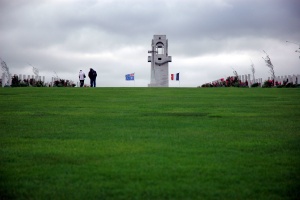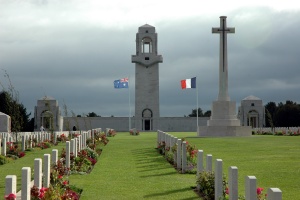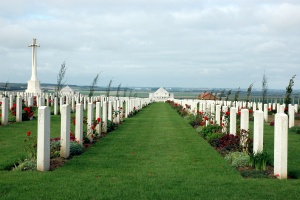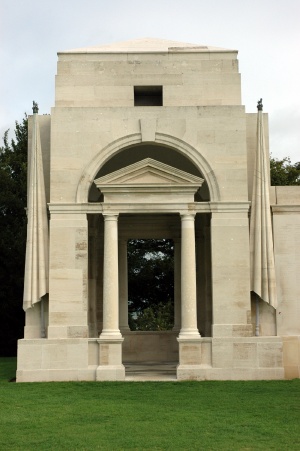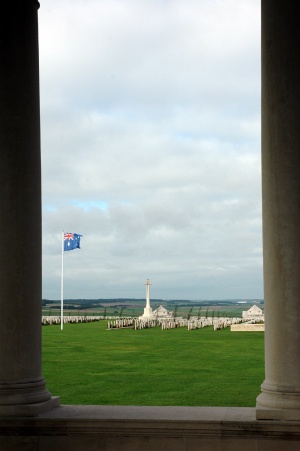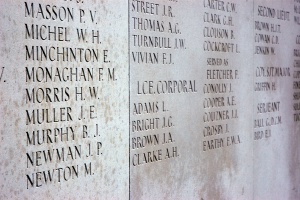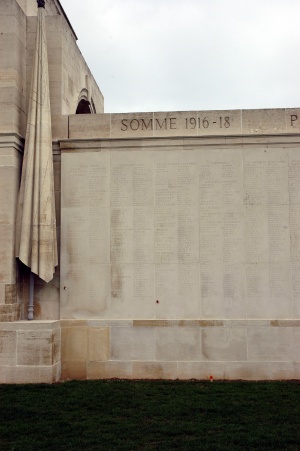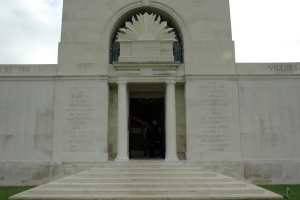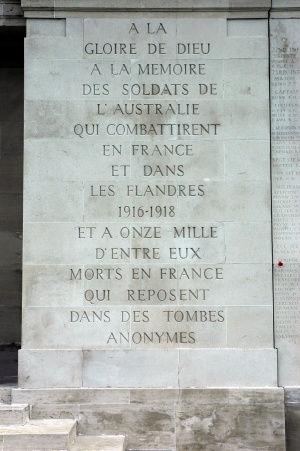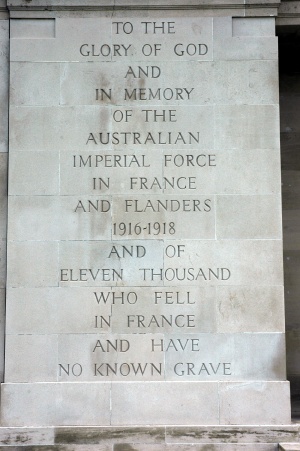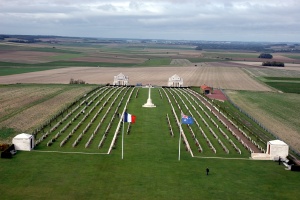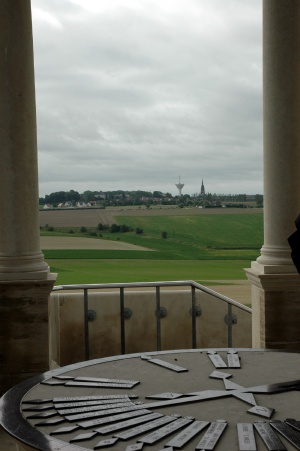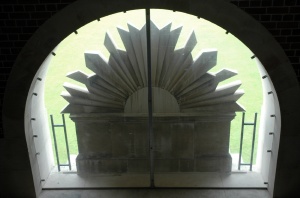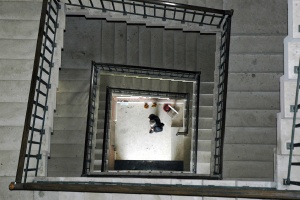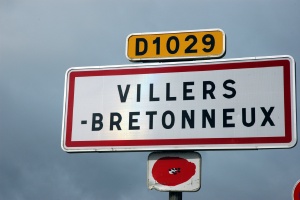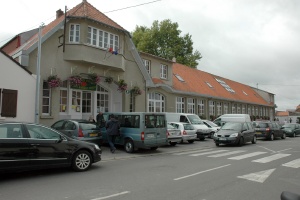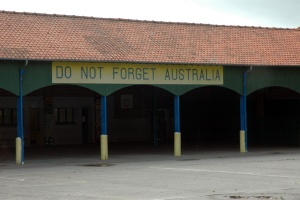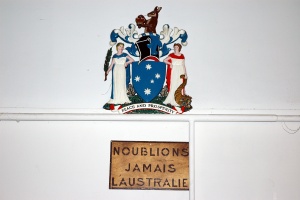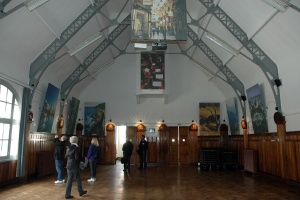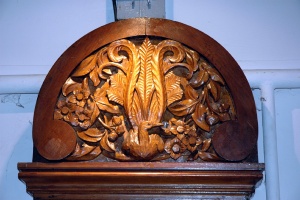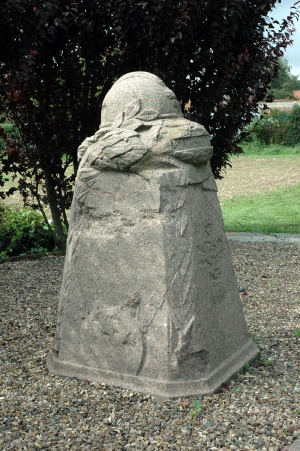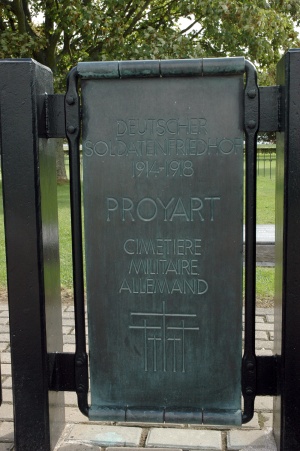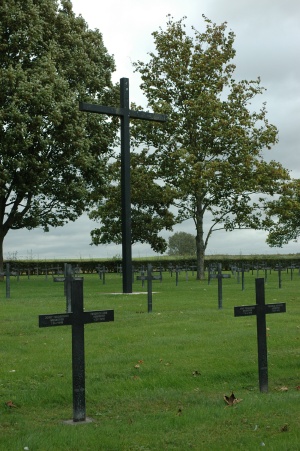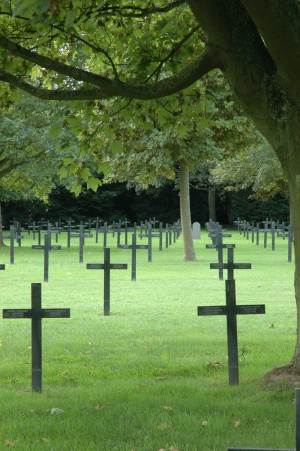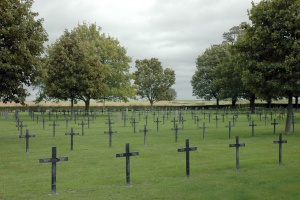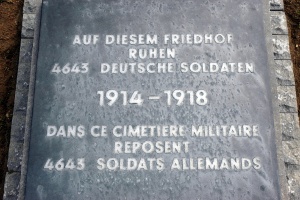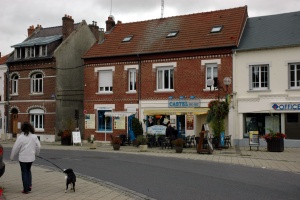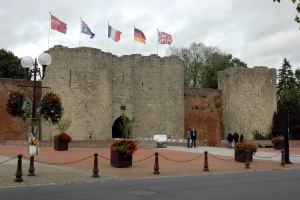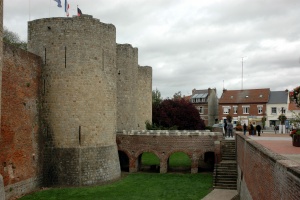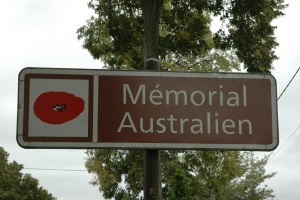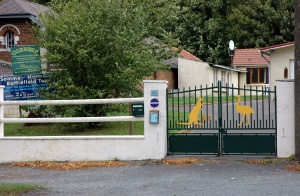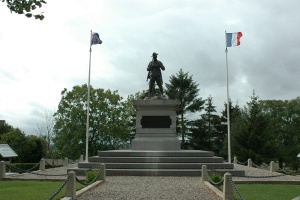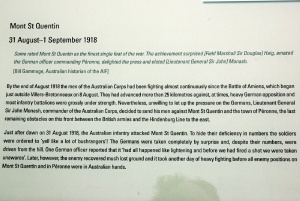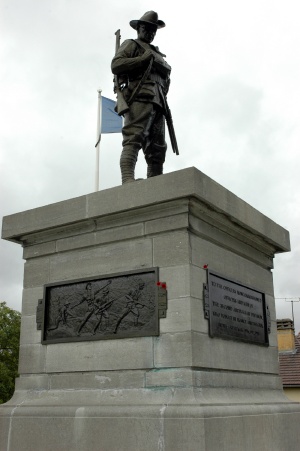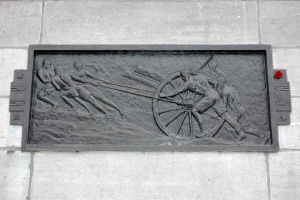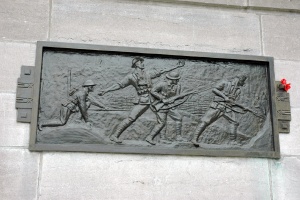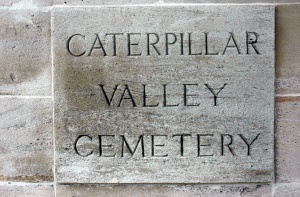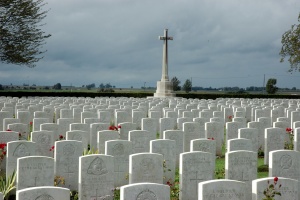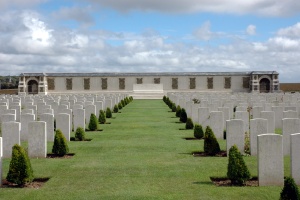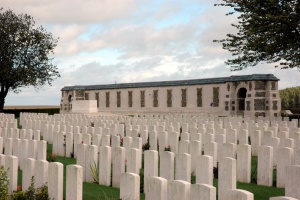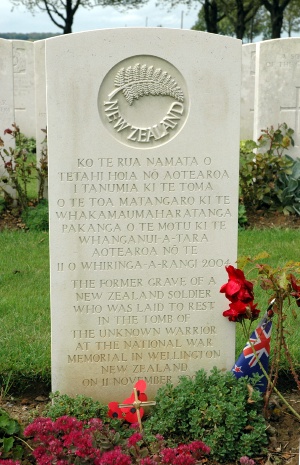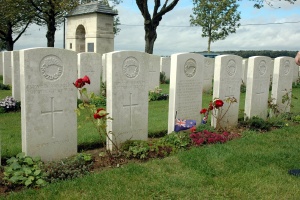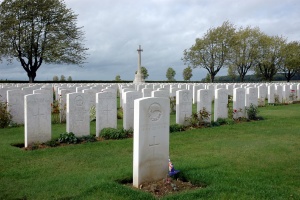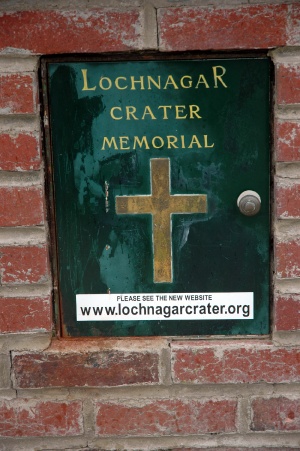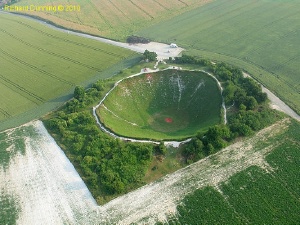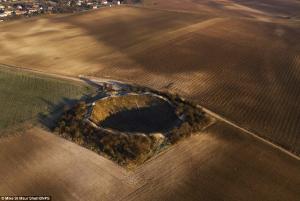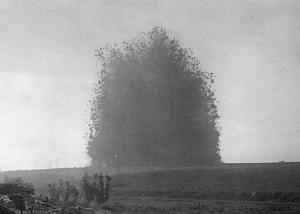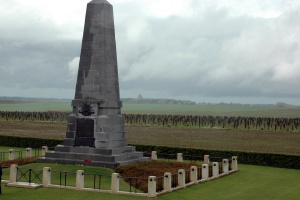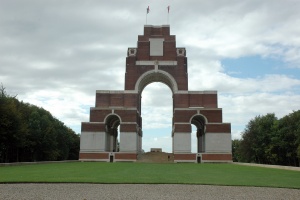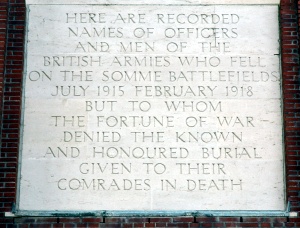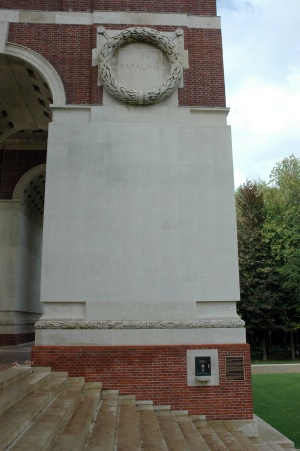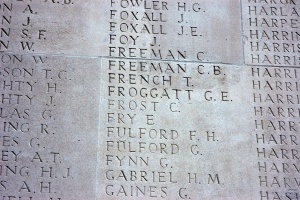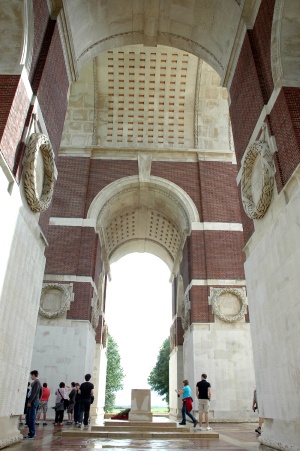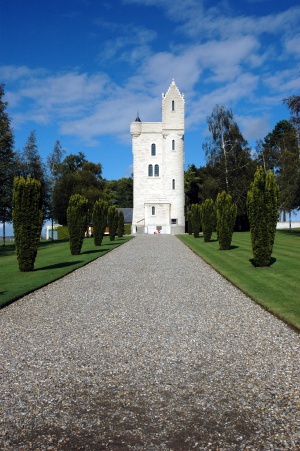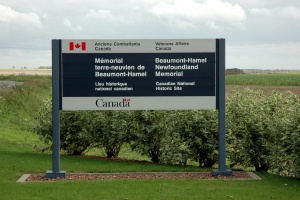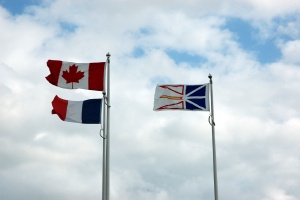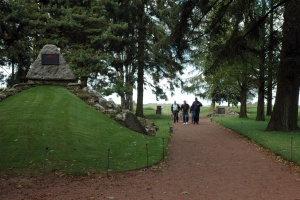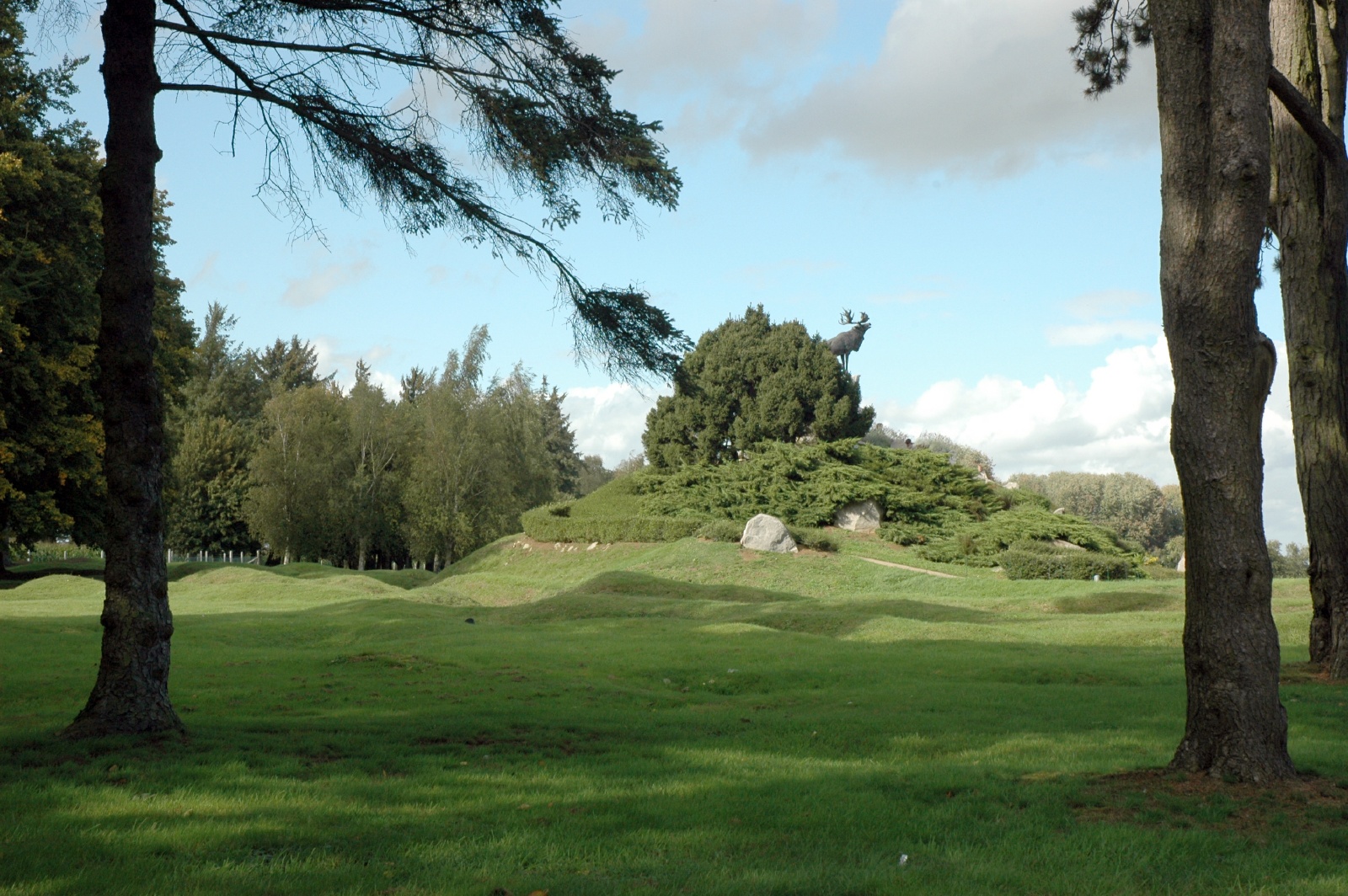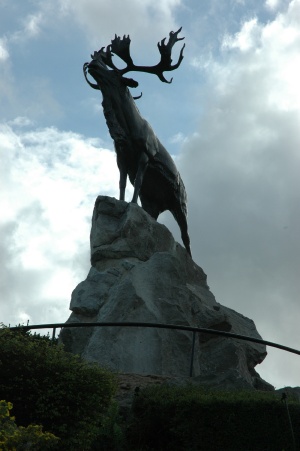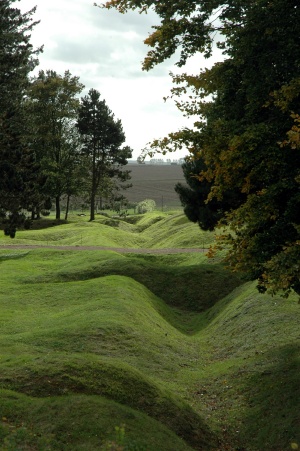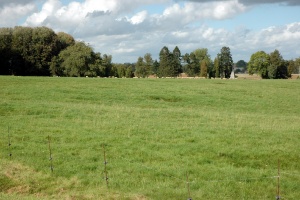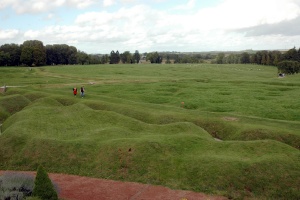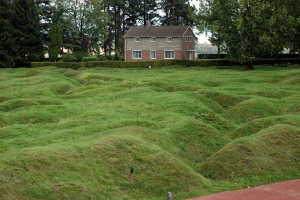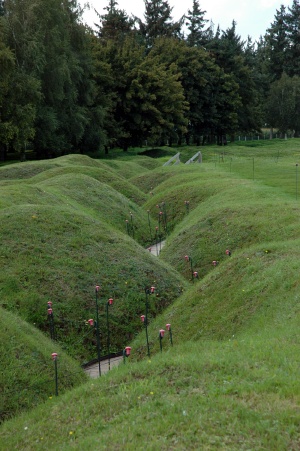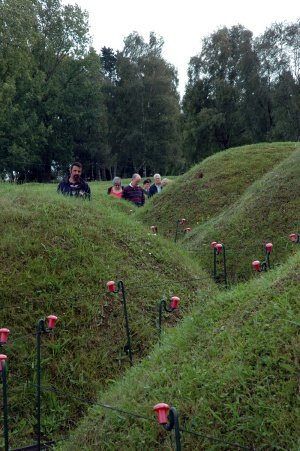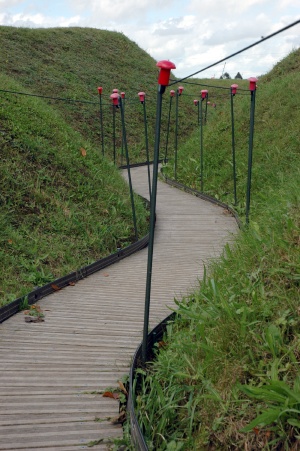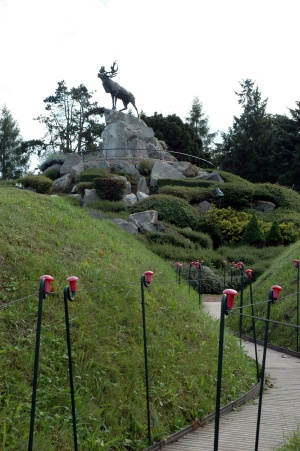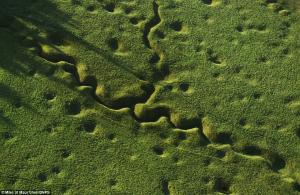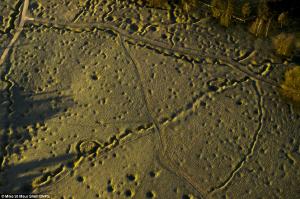Britain 2011 - Day 3IntroductionMonday, and the start of our three day tour of the battlefields around Amiens, the Somme and Passchendale. Delving into family history had led us to learn more about two relatives who had enlisted in the Australian Army and were buried near Amiens. This was a good chance to visit their graves and to look more closely at the battles and memorials. We had thought about hiring a car and following the map (or GPS), but firstly, we have not had much experience in driving the wrong way on motorways, and secondly I was sure that professional guides would be able to tell us much more about the events and the locations. I was right. After checking many websites, we booked with Sylvestre and Estelle who run Terre de Mémoire. This is a small company based in Péronne, near to Amiens. As it turned out, everything on their website was true. They do keep their groups small (6 of us), they are very knowledgeable, and Sylvestre is a great enthusiast. So at 0825 we crossed the road from the hotel and there he was, waiting for us with his mini-bus and fellow travellers - two Australian couples. With two Pauls and two Robins out of the six, names were going to be easy to remember. The Australian Memorial at Villers-BretonneauxOur first stop was the major Australian memorial at Villers-Bretonneaux, built on the top of the last ridge overlooking Amiens. Here the Australian forces stopped the German advance on Amiens. It is a large memorial with a striking entranceway as you climb the ridge and the full extent of the site is revealed. Australian School at Villers-BretonneuxClose to the Australian war memorial is the town of Villers-Bretonneux. After the war, schools in Victoria raised the funds to build a new school here. The upper floor is now a war museum.
German War Cemetery at ProyartFrom Villers-Bretonneux we drove towards Péronne. Just outside the town beside the road was a block of granite carved into a helmet and with wreaths of leaves. This was one of many markers erected by the French after WWI to mark the limit of the German advance. During WWII the Germans sought to destroy these stones, but many were buried by the local farmers and recovered after the war. We stopped at a German war cemetery just outside Proyart. German cemeteries are not common in this area as the Germans were able to transport their dead back to Germany, provided the family was able to pay. Quite a few did not pay, so there are German cemeteries dotted around, but they are not conspicuous. The Treaty of Versailles placed limits on the German cemeteries. They were to be unobtrusive, painted black and in most cases without standing headstones. At Proyart there are 4,643 graves, with each black iron cross bearing 4 names.
Péronne and lunchSylvestre took us to a small cafe in the middle of Péronne for lunch. He knew the place well, as this is his home town. Across the square is a large castle. We did not have time to explore it thoroughly.
Australian Memorial on Mont St QuentinMont St Quentin lies close to Amiens and Péronne. It was the last remaining obstacle between the British forces and Péronne and the Hindenburg Line to the east. On 31 August 1918 Australian forces attacked the hill, catching the German defenders unawares. Their success was widely regarded as the greatest feat of the war.
New Zealand Cemetery at Caterpillar ValleyCaterpillar Valley is one of the main New Zealand cemeteries. From here, one of the unnamed soldiers was exhumed in 2004 and returned to New Zealand, to be reburied in the Tomb of the Unknown Soldier, at the National War Memorial in Wellington. As it happens, my father visited this site as part of the official NZ commemoration of Passchendale, and was also part of the dedication of the Tomb of the Unknown Soldier.
Lochnagar CraterOur next stop was at Lochnagar Crater. This is one of many large craters caused by tunnelling under the German lines and then detonating a huge explosive charge. At Lochnagar two charges of 36,000 pounds and 24,000 pounds of ammonal were detonated on 1 July 1916. The crater is now privately owned and being mantained as a memoral site. (See the website for details)
Thiepval Memorial to the Missing, SommeOn the way to Thiepval we stopped at another Australian memorial - Poziere. A shower of rain moved in so we did not linger, but we could see the British memorial of Thiepval rising above the woods on a distant hill. The memorial at Thiepval is huge. Its design is based on a high arch supported by four feet, but each foot is composed of four square pillars, giving 16 pillars. Each side is engraved with the names of missing British soldiers, giving 64 sides. There are 72,194 officers and men from Britain and South Africa recorded on the memorial. They have no known grave. There is more information about the memorial here. Whilst standing on the steps I looked over the names on the panel beside me. To my surprise there was a "Froggatt" - George Elias - recorded. I checked the full list of names later and found there are six Froggatt names here.
Canadian Memorial at Beaumont-HamelOur last stop for the day was at the large Canadian memorial at Beaumont-Hamel. It is an important location, not just for the memorial, but because it is one of the few places that preserves the orignal trench system that dominated the battles here. Shortly after the battlefront had moved east, a Canadian medic bought the land before the local farmers had filled in the trenches and planted new crops. The main Canadian memorial was thenestablised here. The memorial is also to the people from Newfoundland, which at the time of the war had not joined the Canada Federation of states.
And that was the end of Day One of our tour of the Somme. A memorable day of vast cemeteries and hundreds of thousands of names, many with no known grave. Also a surprise at how flat all the land is, with the "hills" and "ridges" that controlled so much of the battlefield being no more than a slight rise in the gound of 1-3 m height. Also just how many cemeteries and memorials there really are there. Every few hundred metres along the roads we passed yet another small cemetery. It was really only the Australians who insisted on building big cemeteries, the other countries mostly left the dead close to where they fell. Back to previous day
Last updated: 19/06/2017 |
||||||||||||||||||||||||||||||||||||||||||||||||||||||||||||||||||||||||||||||||||||||||||||||||||||||||||||||||||||||||||||||||||||
